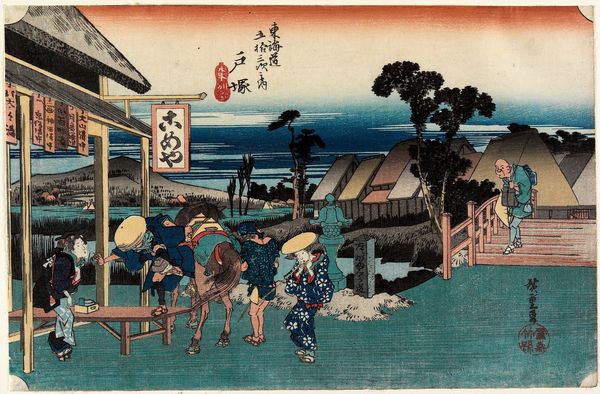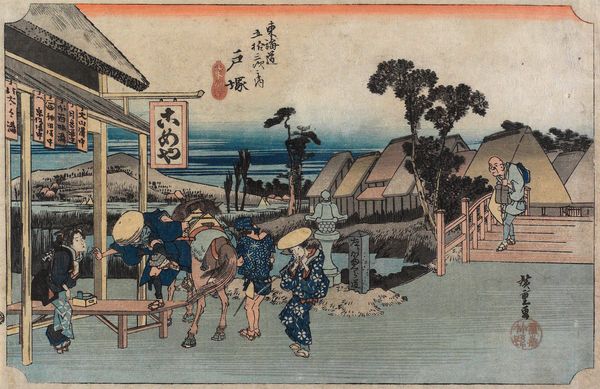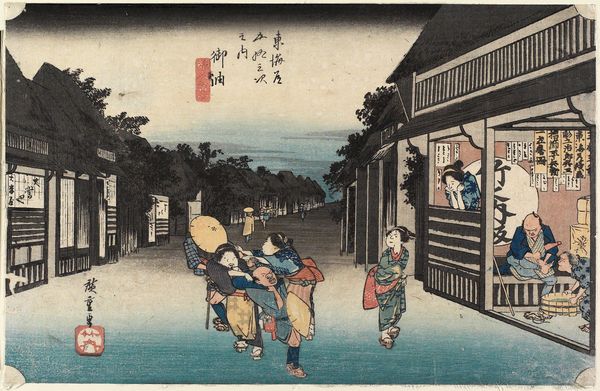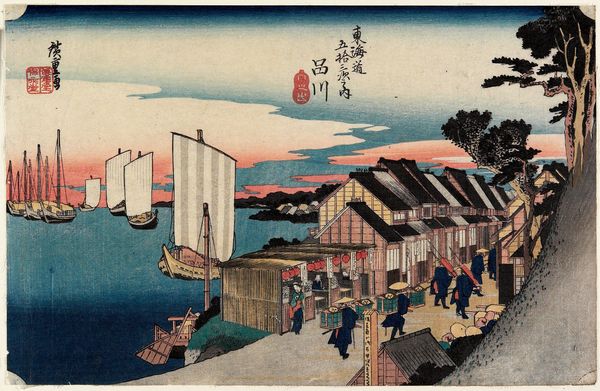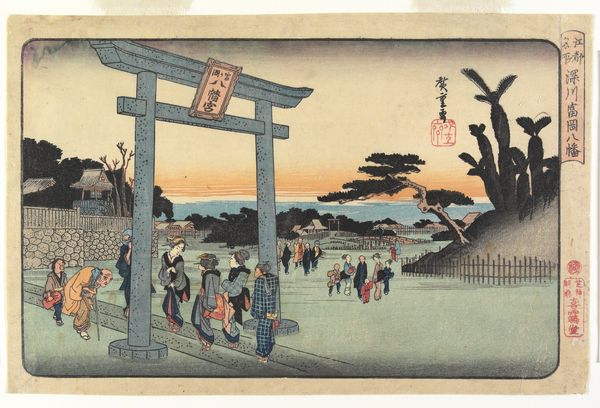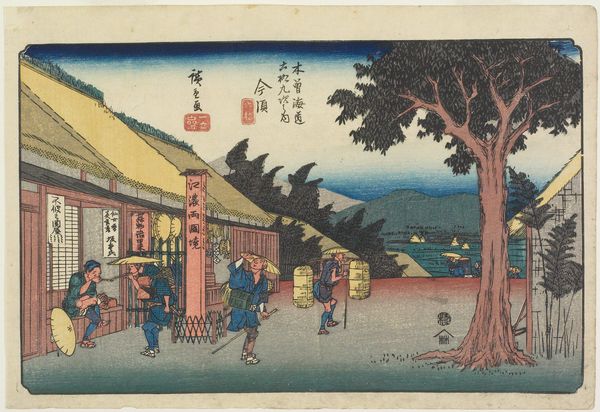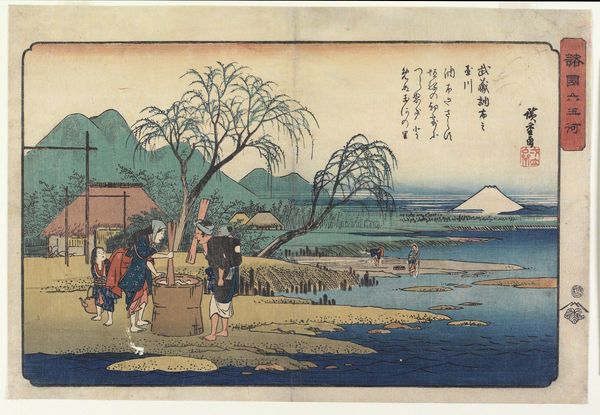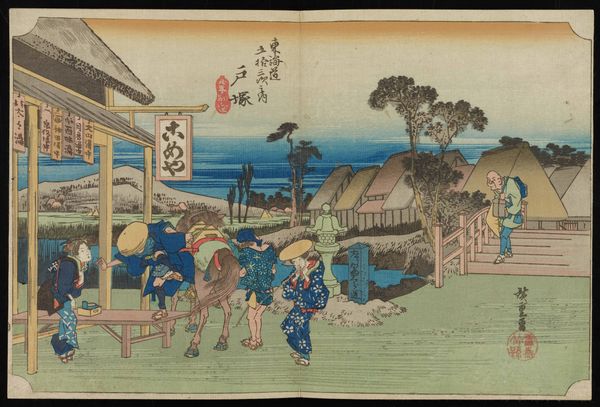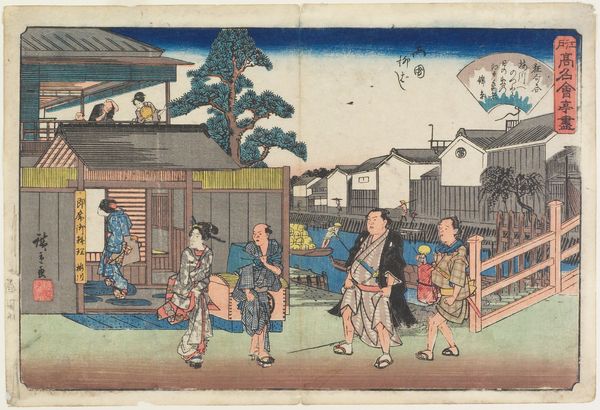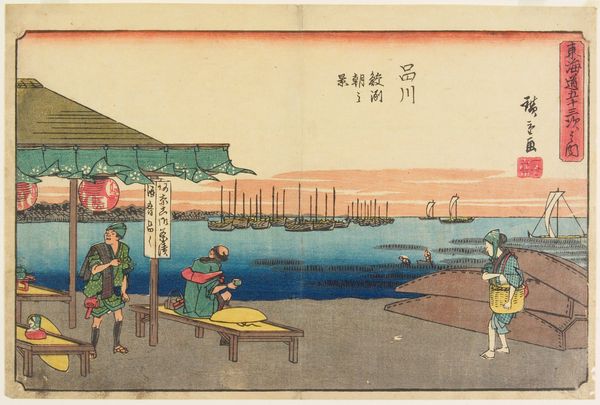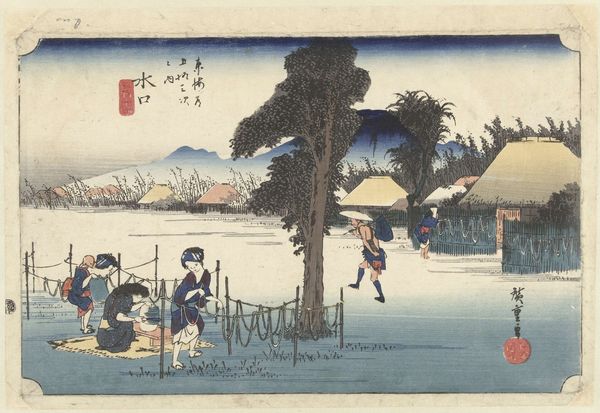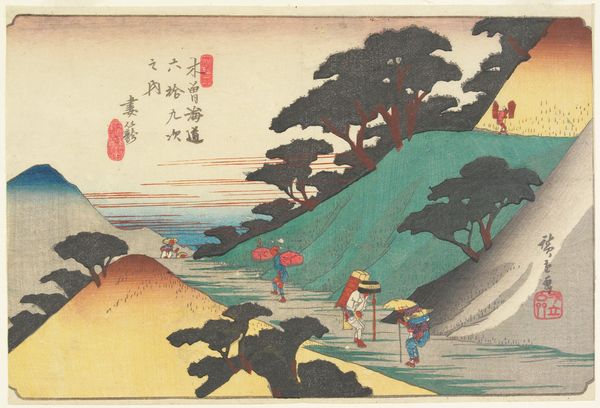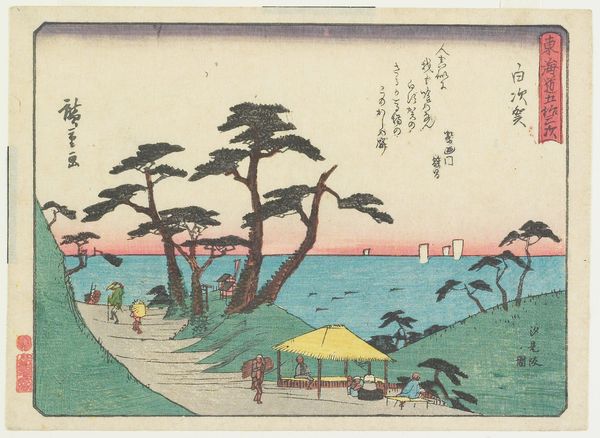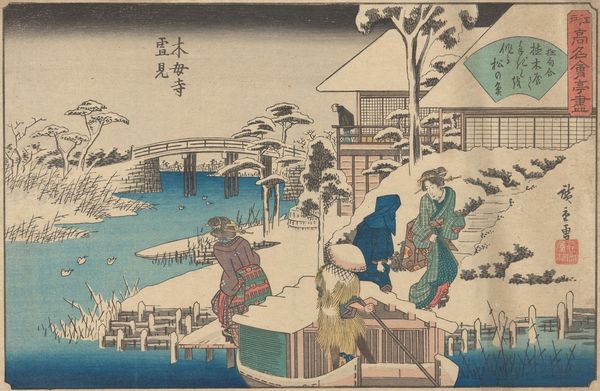
print, ink, woodblock-print
# print
#
landscape
#
ukiyo-e
#
japan
#
ink
#
woodblock-print
Dimensions: 9 13/16 × 14 5/8 in. (25 × 37.1 cm) (sheet, horizontal ōban)
Copyright: Public Domain
Editor: This woodblock print, "Totsuka - Motomachi Fork" by Utagawa Hiroshige, was created around 1832 or 1833. I find the perspective really interesting – we're looking out from what seems like a rest stop toward a tranquil coastal scene, yet there's a flurry of human activity in the foreground. How do you interpret the way Hiroshige combines these elements? Curator: Well, think about the journey itself. The figures on the road, that bustling rest stop... they speak to a collective memory of travel and connection. Notice the fork in the road; crossroads often symbolize choice, fate, and the passage of time in various cultures. How might this specific fork function in the journey represented? Editor: So, it’s not just a depiction of a place, but of the journey, decisions and shared experiences? The rest stop does feel very inviting, doesn’t it? Curator: Absolutely! These places function almost as emotional anchors along the way. In Japanese prints, food holds symbolic weight related to comfort and social bonds. Reflect on the emotional effect generated through those signs on the left, offering foods. They’re also key to reading this image and seeing its original cultural context! Editor: That's fascinating. I hadn’t thought about the cultural significance of food and rest stops within this specific imagery. I was too focused on the picturesque quality of the landscape beyond. Curator: It’s a journey inwards as much as outwards. We see how daily rituals shape shared identity. The rest stop, therefore, holds a special symbolic place within this composition of time and experience. What kind of cultural echoes do you perceive within? Editor: Now, I see the work in an entirely new light, focusing more on the human connections rather than solely the scenery. Thank you. Curator: The pleasure is all mine. The beauty lies in unlocking deeper cultural symbols within art.
